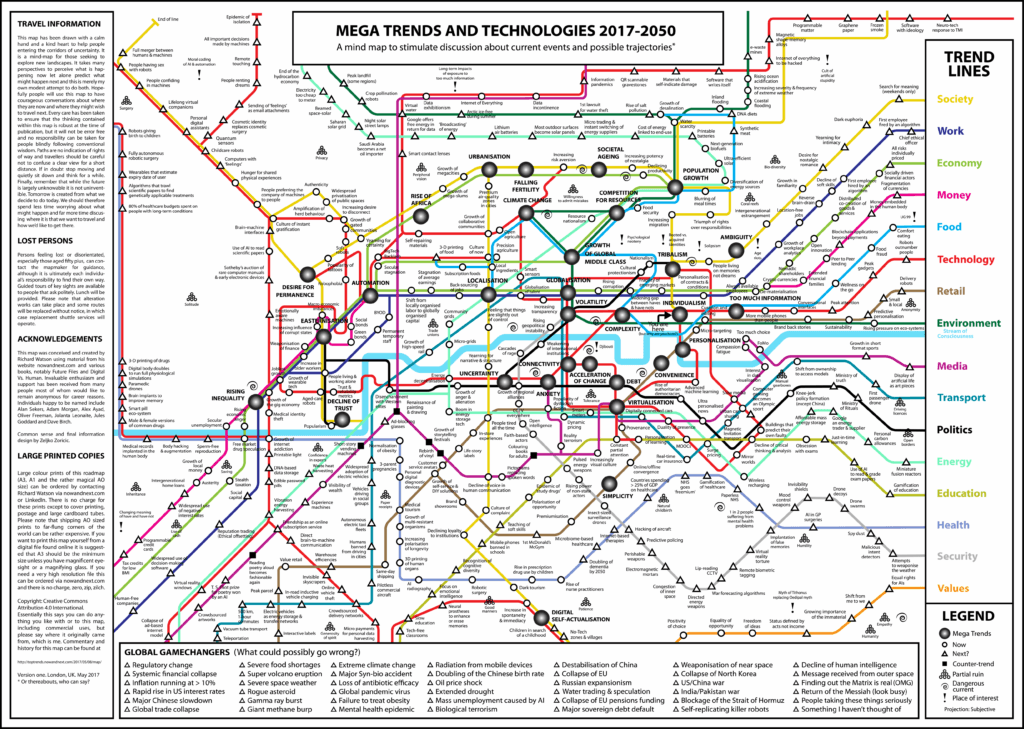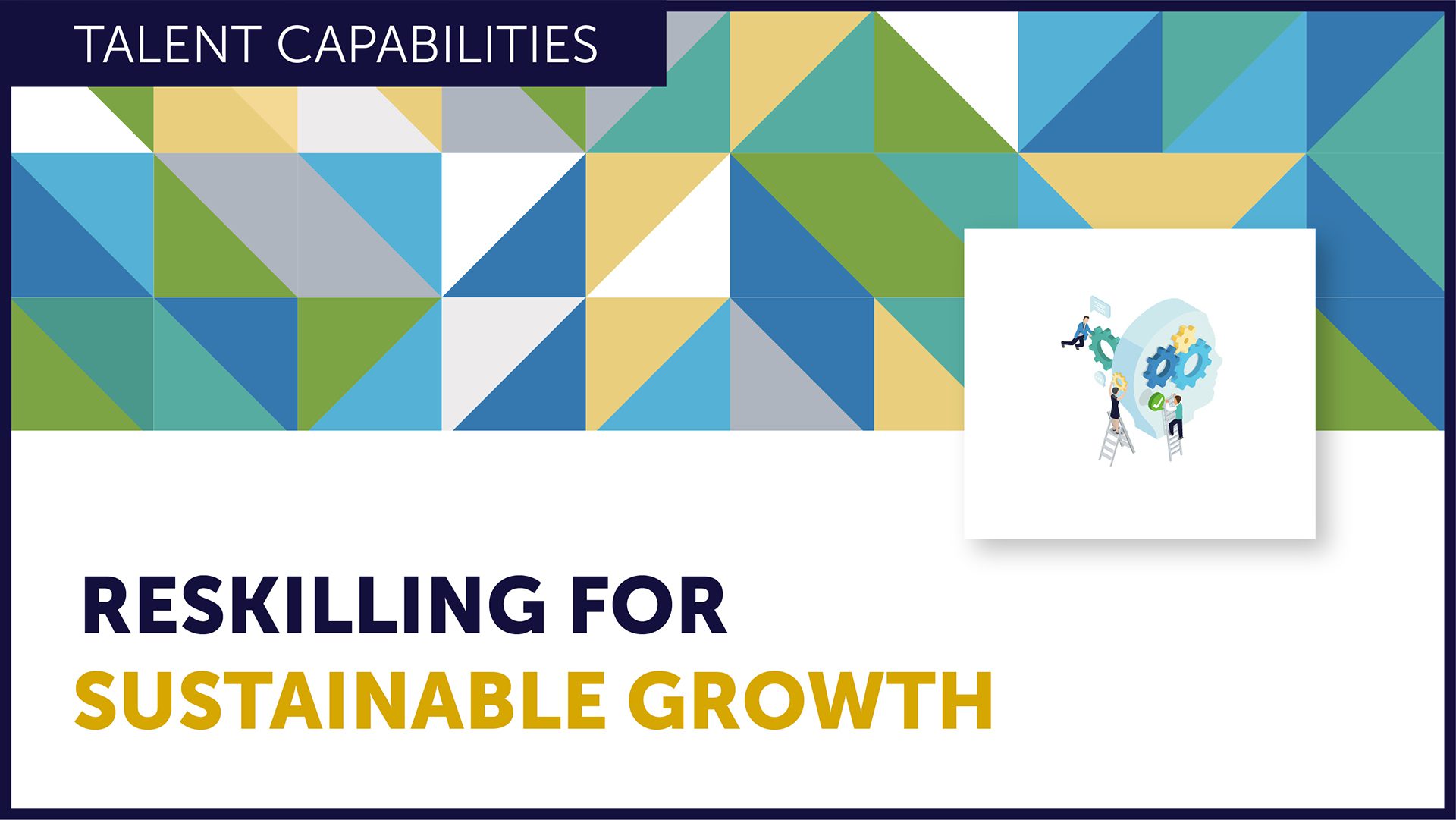Future of Work and People Strategy
Blog: To meet the next global game changer, organisations must disrupt, or die
Director of CRF Learning Nick Holley
It has become very fashionable to talk about change and disruption and I am cynical about fads. Having said that I saw this image, drawn by author and futurist Richard Watson, which shows the sheer volume of disruptive forces at play in society.
The map outlines current events and their possible trajectories and exposes the sheer volume of potential change we might face in the next 30 years.

© What’s Next, 2021
Watson published the thinking in 2017, and interestingly enough listed a ‘global pandemic virus’ as one of the global game changers that could occur before 2050. Three years later and these three words ineeded upended all our forecasts and plans.
Who knows which other of Watson’s suggested game changers might come to pass in the future? Biological terrorism, the collapse of North Korea or even self-replicating killer robots all pose varying levels of threat but will each have a very real impact if they do occur.
The implications for almost any organisation are indeed game-changing so what role do leaders and more specifically HR need to play to prepare their organisations for a world of exponential but unpredictable change?
“Leaders must become comfortable with ambiguity”
Leaders cannot treat disruption as a project after which everything goes back to normal. They cannot base their strategy on trying to forecast the future. Instead, they must become comfortable with ambiguity. Leaders have to create a new capability within their organisation – not to respond to disruption but to be the disruptor. In essence, they must disrupt or die.
For HR the implications are clear. If we define HR’s purpose as ‘building the capability of an organisation to deliver its strategy’, then building a disruption capability surely has to be one of its primary roles.
But what is meant by capability? It’s more than a bunch of people. It’s something that operates across the whole organisation, which is difficult to copy, is systemic and interdependent, and comprises a set of interlocking elements.
I am agnostic about different models, but value McKinsey’s 7S approach in which strategy drives the staff you recruit, their skills, their style, the organisation’s core systems and structures as well as its shared values. (I prefer the word culture but a 6S and 1C model doesn’t sound as elegant). This is a tool beloved by all strategy consultants, and which should be core to what HR does.
This has another implication for HR. HR is not just the people function. It’s the people and organisational function directly driven by the organisation’s strategy. For any organisation these massive disruptive forces in the external environment must be a factor in driving its internal strategic response and therefore where HR needs to focus. This response must be tailored to your current capabilities as well as your desired future state. So, alas there are no universal answers.
In our CRF Learning programme Disrupt or Die: Tools for Tomorrow’s HR Leaders, we will explore what this means for HR. This programme is grounded in a passion for changing the mindset of HR from HR centric to business centric. It will connect you directly to the key conversations your business is having about how to reset and thrive post Coronavirus. It will give you the tools and concepts to be at the leading edge of these conversations, driving the future led conversation about how businesses need to redesign themselves.
MEMBER LOGIN TO ACCESS ALL CRF CONTENT





